Summary
- Slug problems are usually associated with heavy crop residue which holds moisture.
- There is currently no economic threshold based on slug numbers or feeding damage.
- The primary management strategy for slugs is to employ a tillage practice that removes crop residue or incorporates it into the soil.
- In fields with heavy corn residue and a history of slugs, delaying planting until soils warm and germination and plant growth are more rapid improves the chances that soybeans will outgrow potential damage.
- When plant stands are reduced, the grower should monitor stand counts and replant where necessary.
Favorable Conditions
Moist, high residue environments are a slug’s delight. Slugs are sporadic pests of corn primarily associated with no-till practices and heavy crop residue. Their outbreaks are increased by cool, moist springs, mild winters and manure. While not widespread most years, slug injury to corn and soybeans was severe in some states in 2010 and localized outbreaks were reported in some areas in 2015, 2016, and 2017. Corn and soybean fields planted into heavy crop residue are most likely to see damage from slugs. If eggs hatch at crop emergence, slugs can cut off corn coleoptiles and soybean hypocotyls, resulting in severe stand losses.
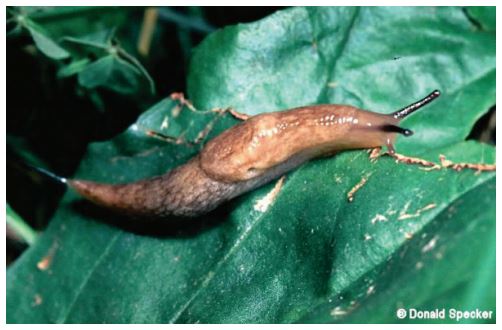
Figure 1. Adult gray garden slug
Characteristics and Lifecycle
The adult gray garden slug is one to two inches long when fully extended. It varies from gray to pale cream and has a light mottled pattern of spots and streaks. The young are the same shape and coloration as the adults. The “slime” they give off is a protectant against environmental stressors. Slugs are nocturnal, meaning they emerge and feed above ground after dark.
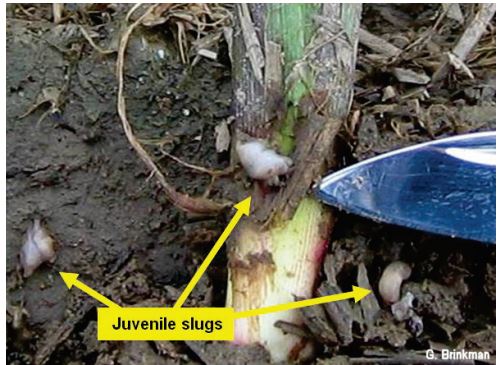
Figure 2. Three small slugs present on and near a corn plant.
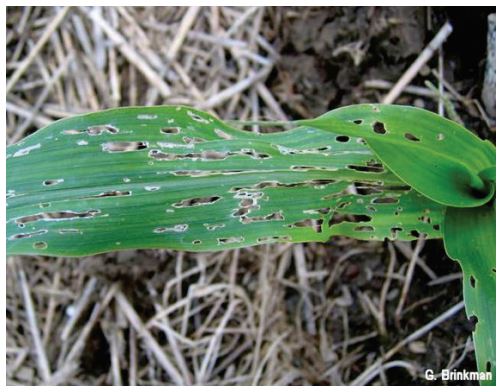
Figure 3. Leaf damage caused by juvenile slugs
The life cycle of the slug starts with eggs. Females lay eggs in masses in the soil in the fall, which are held together by a sticky secretion that turns yellow before hatching. Eggs hatch in about one month, producing small slugs that closely resemble adults except in size. Slugs primarily overwinter as eggs; however, adults can also overwinter. Overlapping generations occur because of the slug's ability for summer - long breeding during favorable conditions. They can live about 12 to 15 months. There is one generation per year.
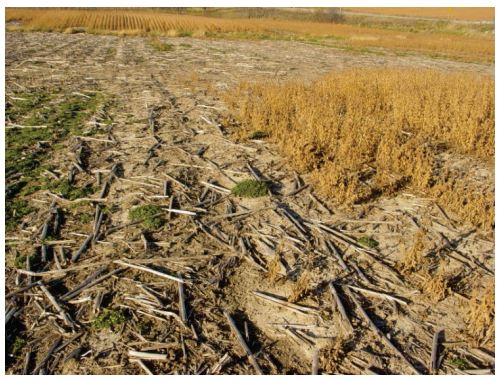
Figure 4. No-tilled field in Barron County, Wisconsin. (Photo courtesy of Jim Boersma.
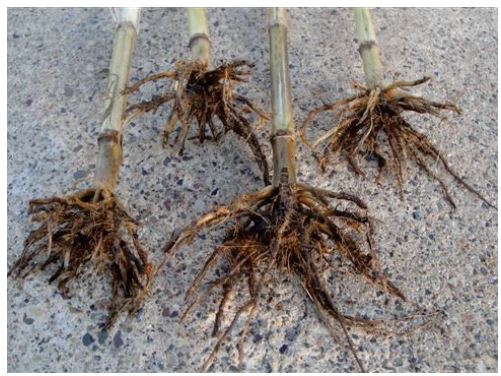
Figure 5. Slug damage to root systems of a hybrid with Bt corn rootworm protection, which does not protect against slug damage. (Photo courtesy of Dave Johnson.
Crop Damage
Slugs are capable of feeding on leaf tissue throughout the growing season, slowing early growth. This leaf feeding is often only cosmetic and if the crop can send out new leaves, it can often “outgrow” slug infestations. No-tilled fields are impacted the most severely (Figure 4). Slugs are mollusks and not susceptible to Bt proteins that control many above and below ground insects. Heavy slug feeding on brace roots can result in root lodging under windy conditions (Figure 5)
Management Considerations
In fields with a history of slug damage, preventative practices to reduce risk of damage include:
- Incorporating crop residue into the soil and delaying planting until soils warm up for rapid germination and emergence.
- Current insecticide seed treatments have no effect on slug populations as slugs are not insects, but mollusks.
- There are baits such as Sluggo® (iron phosphate) that can be applied in a band following planting. Slugs need to ingest this material, so it should be applied close to the row. Then, slugs will have good access to the bait when they come above ground at night to feed.
- Metaldehyde is a molluscide that can give satisfactory control of slugs. Metaldehyde destroys the slime-producing cells of slugs and causes their death.
- Some growers have reported success with applications of 28% UAN solutions, but this nitrogen source can burn corn leaves. Early applications at V3 are preferred so new leaves can emerge and not delay maturity.
- If periods of dry weather develop, slug severity usually tapers off quickly.
- Tile drainage on very heavy or poorly drained soils will help reduce excessive moisture, the preferred environment of slugs.
- Removing corn stalks for bedding also removes the heavy residue cover that helps keep soils moist, which is critical to a slug’s lifecycle.
- An excellent slug factsheet by Ohio State extension entomologists Ronald B. Hammond, Andy Michel, and James B. Eisley can be found at: https://ohioline.osu.edu /factsheet/ENT-20
- See Ohio State University Extension Bulletin 545, Control of Insect Pests of Field Crops, for those molluscicides labeled for slugs, or for all materials labeled on corn and soybean. Bulletin 545 can be accessed at: https://agcrops.osu.edu/sites/agcrops/files/publicationfiles/545%281%29.pdf
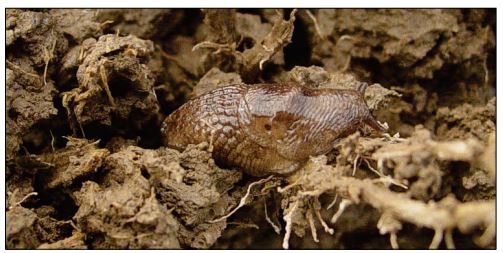
Figure 6. Adult slug feeding on a corn root; Pierce County, Wisconsin, 2010. (Photo courtesy of Jim Boersma.)
The foregoing is provided for informational use only. Please contact your Pioneer sales professional for information and suggestions specific to your operation. Product performance is variable and depends on many factors such as moisture and heat stress, soil type, management practices and environmental stress as well as disease and pest pressures. Individual results may vary. FF171206 (200709) December 201











